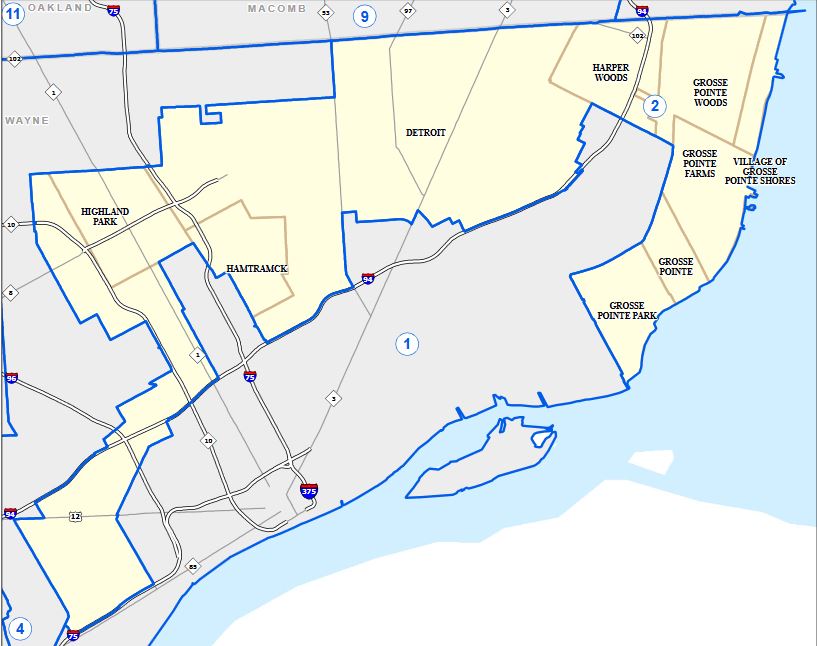Redistricting Commission Needs Michigan Residents’ Help To Define “Community of Interest”
Kimball Brace, a redistricting expert with 45 years of experience, says now is the time to make your voice heard.

New political district lines are coming — and now is finally the time for Michigan residents to make their voices heard on what their new districts should look like.
As part of the weekly series MichMash, hosts Cheyna Roth and Jake Neher unpack what an Independent Citizens Redistricting Commission road tour looks like, and talk to a redistricting expert with 45 years of experience about what a “community of interest” is, and why the commission needs your help figuring that out.
Subscribe to MichMash on iTunes, Spotify, Google Podcasts, NPR One or wherever you get your podcasts.
Michigan’s brand-new Independent Citizens Redistricting Commission has started its work of redrawing our congressional and state legislative district lines after the 2020 Census. After a lengthy battle in court and at the polls, the ballot proposal to have a new method for drawing the state’s lines was approved by voters in 2018.
Now that the commission has been formed, the first step is to get input from Michigan citizens.
You can submit public input to the Independent Citizens Redistricting Commission here.
In order to do that, the commission is going on tour — coming to a town near you, with a total of 16 stops across Michigan. The panel has already held two meetings in Jackson and Kalamazoo. And one of the big questions it’s trying to address is what is a “community of interest?”
Here are the top priorities for the final district maps: they need to comply with federal laws; make sure districts are geographically contiguous; and then they need to reflect the diverse population of our state and “communities of interest.” Experts say no other state prioritizes this more than Michigan does.
But what exactly is a community of interest? In some ways, it’s somewhat self-explanatory. It’s a community of people who share common interests.
“We from the data side look at things like Census information to kind of get a clue on what might be a community of interest. But it’s important that, geographically, we understand what people are talking about.” –Kimball Brace, Election Data Services, Inc.
The Michigan Constitution states that “Communities of interest may include, but shall not be limited to, populations that share cultural or historical characteristics or economic interests.” They do not include relationships with political parties, incumbents or political candidates.
But the tricky part is defining the “community” part of that equation. And there’s not an easy answer to that.
Kimball Brace is the president of Election Data Services, Inc., which has been hired by the redistricting commission to help redraw our political maps. Brace is a nationally recognized redistricting expert who has 40 years of experience drawing political lines. He says it’s up to the public to define what a “community of interest” is.
“Generally, it means that people tend to be somewhat similar in nature,” he says. “We from the data side look at things like Census information to kind of get a clue on what might be a community of interest. But it’s important that, geographically, we understand what people are talking about.”
Here’s where we start getting into some tough questions. Different people define their communities differently. And there’s a lot of identity involved. It can and often has to do with race, ethnicity, economic status, political leanings (although this is not supposed to define a community of interest), urban, rural and suburban. It often has to do with the school district you live in as well as other natural and man-made boundaries.
Click on the audio player above to hear redistricting expert Kimball Brace talk about being on the wrong side of a 2013 segment on “The Daily Show,” which likened him to the “Picasso of Gerrymandering.”
For example, let’s say a huge freeway splits your city in half. Some people might say that freeway is a natural place to draw a district line. Some people might say you should absolutely not draw a district line there in order to keep the community together.
Again, this will all boil down to how the people who speak up at these meetings define “community.”
That exact issue has already come up in the first two meetings that the commission has held. Lots of people echoing the same thing — “Do not split my community up into different political districts.” Which sounds like a great and obvious point on paper. But to achieve that, the commission needs to know which “community” they’re trying to keep together.
When you decide what’s important to you about what your community looks like on a district map let the redistricting commission know. We only get this opportunity once every decade.
Trusted, accurate, up-to-date
WDET is here to keep you informed on essential information, news and resources related to COVID-19.
This is a stressful, insecure time for many. So it’s more important than ever for you, our listeners and readers, who are able to donate to keep supporting WDET’s mission. Please make a gift today.
